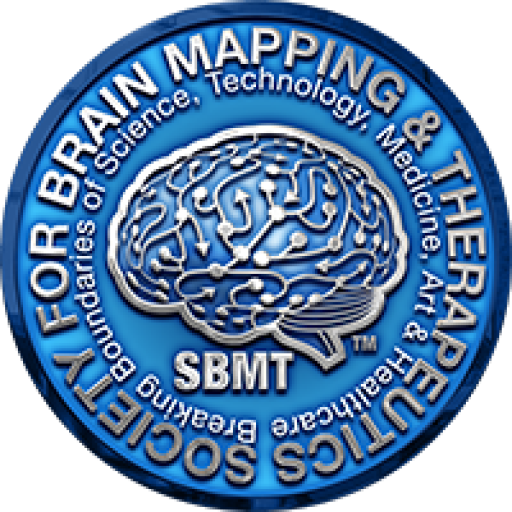
LOS ANGELES, Feb. 18, 2013 /PRNewswire-USNewswire/ — Last Tuesday, in his State of the Union address, President Obama said,”If we want to make the best products, we also have to invest in the best ideas. Every dollar we invested to map the human genome returned $140 to our economy. Today, our scientists are mapping the human brain to unlock the answers to Alzheimer’s; developing drugs to regenerate damaged organs; devising new material to make batteries ten times more powerful. Now is not the time to gut these job-creating investments in science and innovation. Now is the time to reach a level of research and development not seen since the height of the Space Race. We need to make those investments.”
The Society for Brain Mapping and Therapeutics (SBMT), one of the world’s most prestigious and fast growing global multidisciplinary biomedical associations, endorses President Obama’s support for investing heavily in brain mapping translational research now, and agrees that the successful effort to put a man on the moon is an appropriate analogy. “We share President Obama’s vision; The Society has been at the forefront of translational research in brain mapping for the past decade, with its roots in translating state-of-the art NASA/Space technologies into neuroscience in order to rapidly identify solutions for wounded warriors and civilians with neurological disorders,” said Babak Kateb, Founding Chairman of the Board of SBMT, President of the Brain Mapping Foundation, Senior Editor of PLoSOne-NeuroMapping and Therapeutics and Editor of The Textbook of Nanoneurosurgery, Director of National Center for Nano-Bio-Electronics and a research scientist at the Maxine Dunitz Neurosurgical Institute of Cedars-Sinai Medical Center in Los Angeles.
“SBMT broadly defines brain mapping asencompassing the study of the anatomy and function of the brain and spinal cord through the use of imaging (including intraoperative, microscopic, endoscopic and functional approaches), immunohistochemistry, molecular & optogenetics, stem cell and cellular biology, engineering (material, electrical and biomedical), and Nanotechnology,” said Michael Roy, President of SBMT (2012-13), Ret. US Army Colonel, and a Fellow of the American College of Physicians. He continues, “Imagine searching for your house using Google maps. First you get a big picture of the city, then the neighborhood, and ultimately you can distinguish not only your own house, but details like the color of the cars, and pedestrians on the street. Likewise, Brain Mapping provides not only imaging (the big picture) that delineates the structure and function of each region of the brain, but also the fine details of cellular and subcellular elements within the brain such as genomics and proteomics.”
With support from the Brain Mapping Foundation, members of Society for Brain Mapping and Therapeutics have been able to successfully translate many space technologies from diverse agencies and organizations into neuroscience. For example, an electronic nose to identify dangerous chemicals in space has been applied to “sniff out” cancer cells, while use of Carbon nanotubes show promise for potential drug delivery for brain cancer therapy, Infrared thermagraphy can improve intraoperative tumor delineation, and intraoperative UV imaging can enhance brain tumor detection.
Such translational research has regrettably received less funding in recent years due to the NIH budget cuts and clearly foundations do not have the resources to foster such translational medical research on a large scale. All scientists are also dealing with lack of funding mechanisms to support the translation of advanced science and technologies into biotech spinoffs, which could create many new jobs in the US; this gap is infamously called the “valley of death.”
“When we are talking about space technology to map the human brain we are not talking about science fiction or a fantasy land. We are talking about technologies, which are already available and could revolutionize the healthcare industry by reducing cost and morbidity, increase efficiency while creating jobs through biotech spinoffs. Our members have done this in last 10 years with amazing results but we need more private and government partnership and investments in this area, which could save the country billions of dollars in the future,” said Babak Kateb. He continues, “We have significantly advanced the introduction of new clinical trials for patients with Alzheimer’s disease, and worked closely with the US military in order to rapidly find solutions for our beloved wounded warriors who are suffering from devastating neurological disorders. We also need to form a National Data Repository for Neuroscience, which could track progress and help the agencies and scientists be more efficient while eliminating duplications.
The Society has been always supportive of sound bipartisan healthcare policies, which could reduce the cost of healthcare and increase the efficiency of healthcare delivery while creating jobs in the US through spinoffs. Therefore, in last 10 years, SBMT has presented numerous key policymakers with prestigious “Pioneer in Healthcare Policy Awards.” Among the past recipients are former Governor Schwarzenegger (R) for his role in California Stem cell initiatives, and the honorable Senator Ted Kennedy (D) for his remarkable leadership in the healthcare policy arena. This year the Society has nominated the Honorable President Obama, the Honorable Congressman Earl Blumenauer (D-chair of the Congressional Neuroscience Caucus), the Honorable Congresswoman Cathy McMorris Rodgers (R-Co-chairwoman of Congressional Neuroscience Caucus) and Congressman Jim Moran (D-the U.S. Representative for Virginia’s 8th congressional district) for their significant roles in advancing neuroscience research and improving healthcare for both wounded warriors and the civilians in the US.
“We are truly impressed by remarkable work of these nominees, which has been translated into life saving modalities for many patients who are suffering from neurological disorders. We look forward to work with all of them in order to make sure our compatriots (military and Civilians) will have access to the best state-of-the-art diagnostics and treatments in the near future,” said Ret. Vice Admiral Adam Robinson, Former Surgeon General of the US Navy, member of the board of SBMT and Brain Mapping Foundation.
The 10th Annual meeting of the Society for Brain Mapping and Therapeutics will be held at the Baltimore Convention Center (May 12-14, 2013). The Congress consists of over 200 invited speakers and 40 scientific sessions covering neuro-oncology, neuroradiology, neurodegenerative diseases (Alzheimer, Parkinson’s, ALS,…) , autism, spinal disorders, and neurotrauma including concussions and chronic traumatic encephalapothy. “We have brought together some of the finest scientists in the field of neurotrauma and other areas in order to address major neuroscience problems in a multidisciplinary way,” said James Ecklund, SBMT program committee member, Professor of Neurosurgery, and Chairman of Neurosciences for Inova Health System in Virginia. He continued, “experts from many associated fields need to work together in order to have a significant impact on our current neuroscience challenges including prevention, diagnostics and treatment of complex head injuries of wounded warriors and football players. The Society’s annual meeting creates this unique consortium environment which fosters collaboration between many diverse disciplines while simultaneously helping all attendees update their neuroscience knowledge.”
The 10th Annual world Congress for Brain Mapping and Therapeutics is jointly sponsored by International Society for Magnetic Resonance Imaging in Medicine (ISMRM) and SBMT. 2009 World Congress was jointly sponsored by American Association of Neurological Surgeons (AANS) and SBMT. To submit an abstract or to register for this prestigious and world Class scientific event please visit: WWW.WORLDBRAINMAPPING.ORG
About Brain Mapping Foundation:
Brain Mapping Foundation (BMF) is a non-profit 501c3 charitable organization, which is establish for the purpose of facilitating multidisciplinary brain and spinal cord research and expediting integration of cutting-edge technologies into the field of neuroscience. BMF is focused on translating state-of-the-art technologies from NASA, DOD and industry into neurosurgery in order to bring the most advanced medicine to wounded warriors.
CONTACT:
Leo Balthazor:
Leo@WorldBrainMapping.org
Press@WorldBrainMapping.org
Tel: 310-500-6196
SOURCE Society for Brain Mapping and Therapeutics





